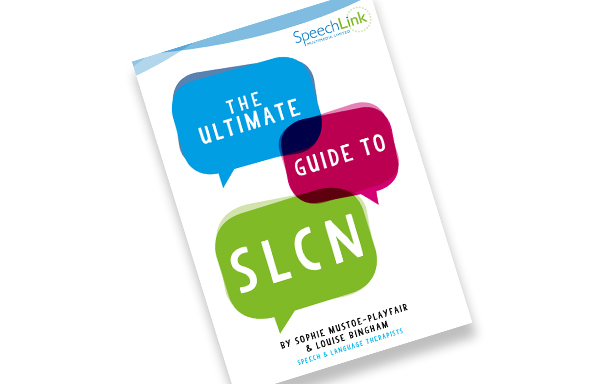The Ultimate Guide to SLCN

Last summer, my colleague Sophie and I started writing an eBook for school staff on supporting children with speech, language and communication needs (SLCN). The context for writing this was that huge numbers of children in the UK struggle to acquire language skills, with many not being identified or supported. We wanted to create a resource that would support staff to better identify and work with all children with SLCN so that we can close the attainment gap.
There has been more of a focus on SLCN in schools in recent years and school staff are increasingly getting better at identifying children, but children continue to fall through the gaps. What are the challenges in working with and supporting SLCN?
The first challenge is that the scale of the problem is huge, with SLCN now the most common primary area of need for children on SEN support. We know that 7% of children will have developmental language disorder (DLD), a long-term and persistent difficulty affecting language, and 3% of children will have a language disorder in association with another condition that results in difficulties with language and communication skills, such as autism spectrum disorder. In addition to this, in areas of social disadvantage, up to 50% of children are starting school with poor language skills, that are not adequate to support their next steps in their learning. These significant gaps in language skills are much larger than gaps in other cognitive skills, putting these children at a disadvantage from the start. Without the right support in place, they cannot catch up with their peers, resulting in a significant attainment gap.
Another problem facing us is the difficulty in identifying these children. Language difficulties are complex, with the nature of difficulties often changing over time, becoming even more complex. They can be described as a ‘hidden need’ as understanding language is not something that we are able to observe. Children can be very good at hiding their language difficulties, showing other ‘symptoms’ that are easier to see or understand, such as poor literacy skills, difficulty making friendships, poor progress and challenging behaviour. These can result in costly resources and interventions being put in place to target ‘symptoms’ rather than the underlying cause of children’s difficulties.
Finally, speaking and listening skills are just not seen as an important part of learning - oral language is barely mentioned in the national curriculum, and only then in relation to English. Even though they underpin everything that we need to learn and make progress in school, there is still limited understanding of the importance of oral language skills
Cut to today and we are delighted to announce the launch of our eBook ‘The Ultimate Guide to SLCN’. This is at a time when it is even more crucial that school staff have the knowledge and skills to identify children with SLCN and put support in place. The DfE are warning that the attainment gap could widen by as much as 75%, because of the coronavirus pandemic. We have written this reference guide to show that identifying and supporting children with SLCN doesn’t need to be so difficult and it is not impossible. There are practical, evidence-based solutions for supporting SLCN and the eBook reflects our experience working as speech and language therapists in schools.
What does the eBook provide for schools?
- Workforce development
Developing an increased understanding and awareness of SLCN in schools, and the impact of this, is crucial in enabling us to bridge the gap. The eBook cuts through the jargon, making SLCN terminology accessible for all, and explaining what you need to know to best identify and support SLCN.
- Tools to identify SLCN
The eBook outlines what to look out for in school, to better enable staff to identify pupils with SLCN, including a practical checklist to work through if you have concerns about a pupil and a step-by-step guide for making your classroom communication friendly.
- Tried and tested strategies
It is a challenge for teachers to adapt and change their classroom practice, and teachers themselves have often expressed a lack of confidence in how to support children with SLCN. Just the way in which teaching staff talk to children can have a significant influence on their understanding and learning, but despite this, high-quality teaching strategies are not the norm. In addition, teachers can be overwhelmed with the number of strategies and recommendations that are given by professionals to support individual children in their classes. In the eBook, we have outlined our core evidence-based, practical strategies that will support ALL children in your classroom, but particularly those with SLCN. Given the number of children with SLCN and the wide range of children that staff encounter in schools, putting these strategies in place is crucial for supporting their access to learning. Once these are in place, we then look at different SLCN diagnoses that children may have, so that you have access to more specific strategies as and when they are needed.
The eBook is designed to enable you to understand the needs of the children in your classroom so that they can meet their potential. We hope you will join us on our mission to ensure that all children with SLCN are supported.
Contact our Speech & Language Help Desk to get your own copy.